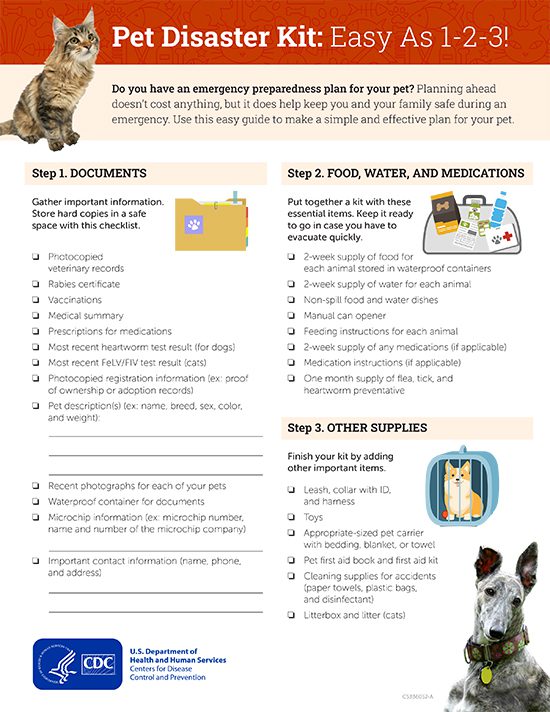Key Takeaways:
- Rabies is a deadly viral disease that affects dogs and other mammals.
- It is primarily transmitted through the bite of an infected animal, commonly a dog or a wild animal.
- Vaccination is the most effective way to prevent rabies in dogs.
- Early symptoms of rabies in dogs include behavioral changes, excessive drooling, and aggression.
- If a dog is suspected to have rabies, it should be immediately quarantined and tested by a veterinarian.
Are you a dog lover? If so, you're in the right place! Today, we're going to dive into the fascinating world of rabies in dogs. Now, you might be wondering why understanding this topic is essential. Well, let me tell you - by learning about rabies and how it affects our furry friends, we can take better care of them and keep them safe. Did you know that every year, around 59,000 people die from rabies worldwide? That's a staggering number! But don't worry, because together we can make a difference. So grab your favorite pup and get ready to explore the ins and outs of rabies in dogs. By the end of this journey, you'll have all the knowledge you need to protect your furry companion and yourself. Let's get started!
What is Rabies and How Does it Affect Dogs?
Rabies is a deadly viral disease that affects the nervous system of mammals, including dogs. It is caused by the rabies virus, which is usually transmitted through the bite of an infected animal. Once the virus enters a dog's body, it travels through the nerves to the brain, where it causes inflammation and damage.
When a dog becomes infected with rabies, it goes through different stages of the disease. The initial stage, known as the prodromal stage, may last for a few days or weeks. During this stage, dogs may show vague symptoms such as fever, loss of appetite, and restlessness.
As the disease progresses to the furious stage, dogs may become aggressive and exhibit unusual behavior like biting at objects or even people. They may also experience muscle spasms and have difficulty swallowing due to paralysis of their throat muscles. In some cases, dogs may progress to the paralytic stage where they become weak and unable to move.
Signs of Rabies in Dogs:
- Aggression or unusual behavior
- Excessive drooling
- Difficulty swallowing
- Muscle spasms
- Paralysis
The Impact on Dogs:
Rabies can have devastating effects on dogs. Once clinical signs appear, there is no cure for rabies and it is almost always fatal. Infected dogs pose a serious risk to other animals and humans as well since saliva containing the virus can be transmitted through bites or scratches.
It is important for dog owners to be aware of the signs of rabies so that they can seek immediate veterinary care if their pet shows any suspicious symptoms. Additionally, vaccinating dogs against rabies is crucial in preventing this deadly disease.
How Do Dogs Get Rabies and What are the Signs?
Dogs usually get rabies through the bite of an infected animal, such as a raccoon, bat, or another dog. The rabies virus is present in the saliva of infected animals and can enter a dog's body through broken skin or mucous membranes.
Once a dog is infected with the rabies virus, it may take some time for symptoms to appear. This period, known as the incubation period, can range from a few weeks to several months. During this time, the virus replicates and spreads within the dog's body without causing any noticeable signs.
As the disease progresses, dogs may exhibit various signs of rabies. These can include behavioral changes like aggression or unusual docility, excessive drooling or foaming at the mouth due to difficulty swallowing, and paralysis or weakness in their hind limbs. Some dogs may also display sensitivity to light and sound.
Signs of Rabies in Dogs:
- Behavioral changes (aggression or docility)
- Excessive drooling or foaming at the mouth
- Difficulty swallowing
- Paralysis or weakness in hind limbs
- Sensitivity to light and sound
If you notice any of these signs in your dog, it is important to seek immediate veterinary attention. Remember that rabies is a serious disease that can be fatal for both dogs and humans.
Can Humans Get Rabies from Infected Dogs? Precautions to Take
Yes, humans can contract rabies from infected dogs if they are bitten by an infected animal. The rabies virus is present in the saliva of infected animals and can be transmitted through bites or scratches that break the skin.
It is crucial to take precautions when dealing with potentially rabid animals. If you are bitten by a dog or any other mammal that could carry rabies, it is important to thoroughly clean the wound with soap and water for at least 10 minutes. After cleaning, apply an antiseptic solution and seek medical attention immediately.
To prevent the transmission of rabies, it is recommended to vaccinate dogs against the disease. Vaccination not only protects dogs but also reduces the risk of transmission to humans. It is important to keep your dog's vaccinations up to date and follow your veterinarian's recommendations for booster shots.
Precautions to Take:
- Avoid approaching or touching stray or wild animals
- Vaccinate your dog against rabies
- Report any animal bites or scratches to local authorities
- Seek immediate medical attention if bitten by a potentially rabid animal
By taking these precautions, you can help protect yourself and others from the risk of contracting rabies.
Preventing Rabies in Dogs: Vaccines and Tips
Vaccination is the most effective way to prevent rabies in dogs. The rabies vaccine stimulates the dog's immune system to produce antibodies that can fight off the virus if they are exposed to it. Puppies should receive their first rabies vaccine between 12 and 16 weeks of age, followed by booster shots according to your veterinarian's schedule.
In addition to vaccination, there are other steps you can take to prevent your dog from getting rabies. Keep your dog on a leash when outside so that they do not come into contact with potentially infected animals. Avoid letting your dog roam freely in areas where wildlife may be present, such as forests or fields.
It is also important to avoid feeding or handling stray animals, as they may carry the rabies virus without showing any signs of illness. Teach children about the risks of approaching unfamiliar animals and supervise their interactions with pets or wildlife.
Tips for Preventing Rabies:
- Vaccinate your dog against rabies as recommended by your veterinarian
- Keep your dog on a leash when outside
- Avoid contact with stray or wild animals
- Teach children about the risks of approaching unfamiliar animals
By following these preventive measures, you can significantly reduce the risk of your dog contracting rabies and protect their health and well-being.
Suspecting Rabies in Your Dog: What to Do?
If you suspect that your dog may have rabies, it is important to take immediate action for the safety of both your pet and yourself. Contact your veterinarian as soon as possible and explain the symptoms or behaviors that concern you. They will be able to guide you on the next steps to take.
In some cases, your veterinarian may recommend isolating your dog to prevent any potential transmission of the virus. If necessary, they may also arrange for a laboratory test to confirm the presence of rabies in your dog.
It is crucial to remember that handling a potentially rabid animal can be dangerous. Avoid direct contact with saliva or any bodily fluids from an infected dog. If you need to transport your dog to the veterinarian, use gloves and avoid any bites or scratches.
What to Do if You Suspect Rabies:
- Contact your veterinarian immediately
- Follow their guidance on isolating or transporting your dog safely
- Avoid direct contact with saliva or bodily fluids from an infected animal
By taking prompt action and seeking veterinary assistance, you can ensure proper care for your dog while minimizing the risk of exposure to others.
High-Risk Areas for Rabies in Dogs: Know Before You Go
Rabies can be found worldwide, but certain areas have a higher risk of infection than others. It is important to be aware of these high-risk areas if you plan on traveling with your dog or visiting different regions.
In many countries, especially those in Africa, Asia, and Latin America, rabies is more prevalent among dogs and wildlife. Rural areas with limited access to veterinary services often have a higher risk of rabies transmission. It is important to research and understand the rabies situation in the specific area you plan to visit.
If you are traveling to a high-risk area, make sure your dog's vaccinations are up to date before the trip. Additionally, take precautions to minimize contact between your dog and potentially infected animals. Keep your dog on a leash and avoid letting them roam freely in areas where wildlife may be present.
High-Risk Areas for Rabies:
- Africa
- Asia
- Latin America
By being aware of high-risk areas and taking necessary precautions, you can help protect your dog from potential exposure to rabies while traveling.
Cure and Prognosis for Rabies in Dogs
Unfortunately, there is no cure for rabies once clinical signs appear in dogs. The disease is almost always fatal once symptoms develop. Due to the severity of rabies and its potential transmission to humans, infected dogs are often euthanized to prevent further spread of the virus.
It is important to remember that prevention through vaccination is key when it comes to rabies. By vaccinating your dog against rabies as recommended by your veterinarian, you can significantly reduce their risk of contracting this deadly disease.
If you suspect that your dog may have been exposed to rabies or shows signs of the disease, seek immediate veterinary care. Your veterinarian will be able to assess the situation and guide you on appropriate measures to protect both your pet and yourself from the risks associated with rabies.
In conclusion, rabies is a serious disease that can affect dogs. It is important for dog owners to vaccinate their pets to prevent the spread of this dangerous virus and protect both their dogs and themselves from harm.
How do you know if your dog has rabies?
It is not possible to determine if an animal has rabies just by looking at it. The only way to confirm if an animal (or a person) has rabies is through laboratory testing. However, animals with rabies may exhibit unusual behavior such as aggression, attempts to bite, or excessive drooling.
What are the behaviors of a dog with rabies?
Symptoms can rapidly advance within a few days and include problems with brain function, dysfunction in cranial nerves, lack of coordination, muscle weakness, loss of movement, seizures, trouble breathing, trouble swallowing, excessive drooling, unusual behavior, aggression, and/or self-harm.
Can a dog survive getting rabies?
In the majority of cases, rabies is a deadly disease for dogs. It is extremely rare for dogs to recover from rabies, although there have been a few isolated cases in the past.
How long can a dog live with rabies?
The time it takes for symptoms of rabies to appear after a bite can range from a few days to six months or longer. In dogs, this period usually lasts from two weeks to four months, and death occurs one to two weeks after symptoms start.
Can you tell if a dog has rabies without killing it?
The only certain method of confirming if an animal has rabies is by examining its brain, which cannot be done while the animal is alive. Tests conducted on blood or before death are not sufficiently reliable when human lives are at risk. Therefore, the animal's head must be removed and sent to a state laboratory for rabies testing.
Do dogs with rabies drink water?
Rabies causes a fear of water in dogs and other affected mammals. As a result, they avoid drinking water, which leads to dehydration. This fear is a result of the disease causing muscle stiffness in the throat, making swallowing painful.

















